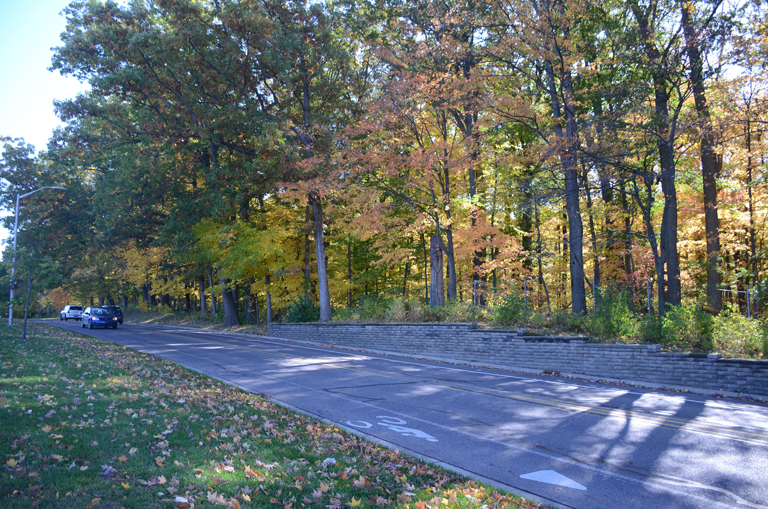URBAN FORESTRY AND CLIMATE CHANGE ADAPTATION: “As more cities begin to link their current climate change activities to the benefits of carbon sequestration and storage through the management of urban forests, the climate benefits provided by trees will only continue to increase,” stated Dr. Lauren Cooper, Forest Carbon and Climate Program, Michigan State University
Note to Reader:
In November 2019, the Mongabay science and environment website published a commentary co-authored by Dr. Lauren Cooper and Chad Papa of the Michigan State University Forestry Department. Titled How cities can lead the fight against climate change using urban forestry and tree, the article elaborates on how comprehensive urban forestry planning can influence the everyday lives of city dwellers.
 Lauren Cooper directs the Forest Carbon and Climate Program for Michigan State University Forestry Department and has experience in forest carbon project development and wood utilization linkages to sustainability. Her current research looking at socio-ecological carbon cycling, conservation incentives, and linking development and conservation. Her expertise is in policy implementation, impact assessment, stakeholder engagement, knowledge transfer, and forestry.
Lauren Cooper directs the Forest Carbon and Climate Program for Michigan State University Forestry Department and has experience in forest carbon project development and wood utilization linkages to sustainability. Her current research looking at socio-ecological carbon cycling, conservation incentives, and linking development and conservation. Her expertise is in policy implementation, impact assessment, stakeholder engagement, knowledge transfer, and forestry.
 Chad Papa is a PhD student in the Forestry Department at Michigan State University (MSU) where he researches how environmental factors influence carbon cycling and carbon uptake in West African woodlands. Additionally, he serves as a research assistant for the Forest Carbon and Climate Program at MSU, helping create learning materials for land managers and stakeholders to better understand forest carbon management.
Chad Papa is a PhD student in the Forestry Department at Michigan State University (MSU) where he researches how environmental factors influence carbon cycling and carbon uptake in West African woodlands. Additionally, he serves as a research assistant for the Forest Carbon and Climate Program at MSU, helping create learning materials for land managers and stakeholders to better understand forest carbon management.
Mongabay articles are licensed under a Creative Commons Attribution-NoDerivatives 4.0 International License. Below, extracts from the article are reproduced directly in order to provide the reader with a concise sense of the content. Readers are encouraged to read the article in its entirety as it is posted on Mongabay.
How Cities can Lead the Fight Against Climate Change Using Urban Forestry and Trees
Comprehensive urban forestry planning can influence the everyday lives of city dwellers by reducing storm water runoff, decreasing wildfire risk and severity, reducing urban heat islands, decreasing utility costs, increasing economic growth, and providing clean drinking water.
Urban trees also have the ability to sequester atmospheric carbon dioxide (CO2) and serve as long-term carbon sinks. However, cities seem to be lacking in language and planning to link together various mitigation and adaptation strategies specifically to sequester and store CO2 within urban trees.
While there are examples of cities incorporating forest carbon storage and sequestration policies into their planning, these are limited, and often only in our largest cities. Many cities have excellent programming to encourage tree plantings and green space but are not quite comfortable taking a leap into climate mitigation claims and calculations.
What Cities are Doing
Looking at urban forestry plans across the country, there are three main examples of ways cities use urban forestry to store more carbon: 1) tree plantings; 2) percent canopy cover targets; and 3) urban forest management strategies.
Tree plantings are the most common local policy that provides carbon storage. Cities across the US have programs to provide free trees, request plantings, access educational materials, and receive tree maintenance.
Cities often target increasing tree canopy cover to reduce urban heat island temperatures or to reduce stormwater runoff. However, increasing canopy cover provides additional benefits through carbon storage, sequestration, habitat derivation, and biodiversity.
The most progressive forest carbon policies are comprehensive urban forest management plans. While cities of all sizes have an opportunity to lead when it comes to combating climate change, plenty of challenges remain. With tight municipal budgets, funding for such initiatives remains a crucial challenge to achieving climate mitigation goals.
Overall, cities remain an important piece of the puzzle to meeting global climate change goals. As more cities begin to link their current climate change activities to the benefits of carbon sequestration and storage through the management of urban forests, the climate benefits provided by trees will only continue to increase.
To Learn More:
To read the complete article by Chad Papa and Lauren Cooper, download a copy of How cities can lead the fight against climate change using urban forestry and trees

Urban trees. Photo Credit: MSU Forestry Department.


The twin towers of the Bosco Verticale, Milan

